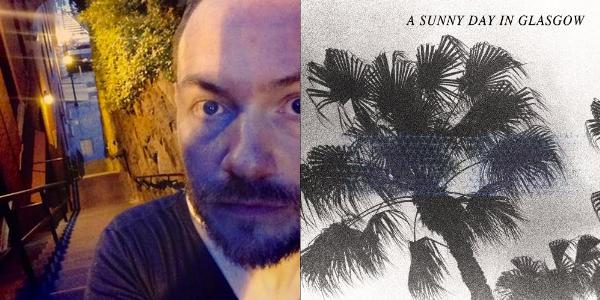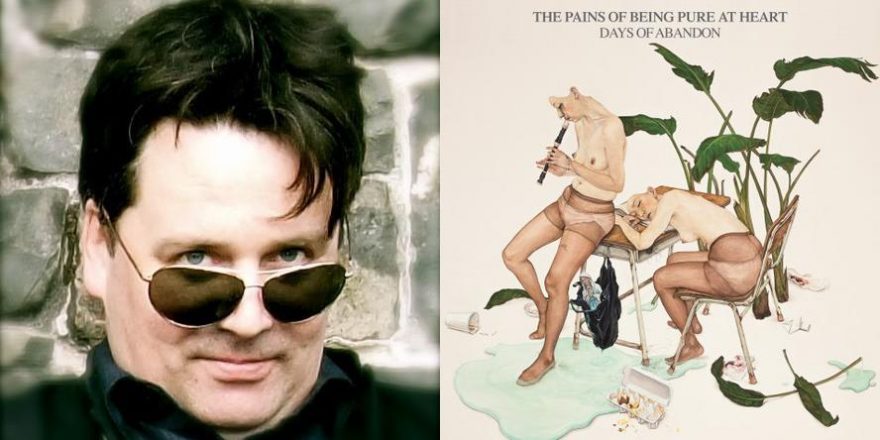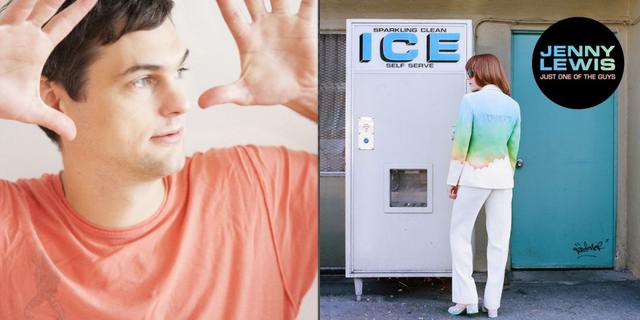“Hey! How are you? Did you hear the new Destroyer?” It’s funny to think that I’ve repeated that phrase every two or three-ish years for the past eleven years. Those words put me back in the room with the people I’ve spoken them to. I’m not close with all of them, but it’s a list of people that I remember for some reason. And from there I remember other things, other sentences. “Did you need an invitation to OiNK?” is one follow-up in particular, and it helps date the interaction. Over the years, the follow-ups change: someone moved, someone had a baby, OiNK got shut down! But it’s a place I’ve been to before, and a place I’m now in again, because there is a new Destroyer album.
I scan for the Destroyer-triggered blips in my past and the circles expand from there, illuminating the time, place and people surrounding them, and I can see what we look like. It’s a visual impression but also the impression of how we were and have continued to be. Referring to music and people (and the internet) is how I navigate the purview of my experiences. I can’t really process the new sensory information in a record without thinking about the context of experiencing it.
While first listening to the record, I made a note that I should dance — not freestyle dancing, more like when a song tells you how to dance directly, like, “Hey, twist.” And there was some light twisting, but it was lots of shoulders and hip movements from another time. Like being directed to dance exactly like my mom. A very specific feeling.
And I didn’t know exactly what it was that compelled me to dance. But, because the idea to dance didn’t feel exactly like my own, I searched the internet for “directives” and googled “how to get people to do things.” Here, loosely, are finance.yahoo.com’s suggestions for how to get people to do what you want:
- Confuse them
- Ask for favors when they are tired
- Display an image of eyes (so that people will behave more honestly)
- Do not put them in a room with a briefcase, a leather portfolio and a fountain pen (because if you do, they will be more selfish)
- Scare ’em
Destroyer’s new album, Poison Season, feels as intentional as a room with a pen and a briefcase in it, but there’s no proof that my dancing like my mom was its intention. My planted feet and deep, bent knees were more a symptom of listening. The way the smell of a pizza place makes you hungry. It felt like that — like the symptom of an environment.
A friend of mine gave a talk about environments the week I got this album. He brought up King Lear, Act 4, Scene 6
GLOUCESTER
I see it feelingly.
KING LEAR
What, art mad? A man may see how this world goes with no eyes. Look with thine ears…
And that’s very much my friend, to be giving a talk about environments and quoting Shakespeare. And that’s so Shakespeare, to be writing about seeing with your ears. What we do becomes our style, and people can see it. There’s no real place to hide.
Poison Season isn’t vague, and it doesn’t serve vague purposes such as parties or summer. It’s for itself and it’s all on purpose, like it’s intentionally made of music. Taking advantage of the time it takes for ears to turn sounds into sense, the scene becomes visible at the rate of the song and not sooner. There are bold Springsteen-like sax riffs and the faint sound of a squeaking chair, and the contrast serves to define an image of Bejar himself.
That voice. It looks like when they take a ruin or an ancient shack and rebuild it in a bright museum with white walls and high ceilings. Surrounded by violins, saxophones, late-night drums and close, deftly played bongos, his voice doesn’t sound displaced, it sounds exactly placed; surrounded by violins, saxophones, late night drums and close, deftly played bongos. In this environment, you can see his voice’s exact shape.
Jackson Pollock said, “When you’re painting out of your consciousness, figures are bound to emerge…. Every good artist paints what he is.” The qualities in Bejar’s voice, both the inherent ones and the ones that sound accidental, sound brave in this context. It’s a voice that’s unmistakably Destroyer and has no intention to hide that. It can hold its own in counterpoint with the bowing of a string quartet or the tight groove of a funk guitar. And even such descriptions as a “string quartet” and “a funk guitar” seem vague in comparison to the exact figure of Bejar’s voice.
So there’s a new Destroyer, but I can’t drag myself away from staring at the bigger picture, this album in the context of his entire body of work. He keeps letting people see him, and in an increasingly clearer and more artfully managed light. And the albums continue to describe and be a companion to the arc of a human experience. It makes me happy — it’s fun to be in awe. Because I don’t know how you do that, I don’t even know what to Google to find out.









